At present, the most common clinical treatment methods for bone tumors include surgery, radiation therapy and chemotherapy. Traditional radiotherapy and chemotherapy have large side effects. Surgical treatment usually has residual bone tumor cells and causes large bone defects. How to prepare biomaterials that treat both bone tumors and repair bone defects is a big challenge.
Recently, Wu Chengtie, a researcher at the Shanghai Institute of Ceramics of the Chinese Academy of Sciences, and a research team led by Chang Jiang first proposed the idea of ​​combining bone tissue engineering with photothermal therapy to prepare photothermal functionalization for the treatment and repair of bone tumor defects. New progress has been made in the study of bioactive ceramic scaffolds. In this study, bio-ceramic and graphene oxide composite scaffolds were prepared by 3D printing technology (see Figure 1). Under ultra-low power near-infrared light, the temperature of the scaffold can be increased rapidly, and its photothermal performance can be controlled. In vitro, the tumor killing rate of bone tumors reached 90% (see Figure 2). Implantation of the functionalized scaffold in mice and irradiation with light effectively inhibited subcutaneous tumor growth in nude mice, while the tumor volume of the control group continued to increase with the number of days (see Figure 3). At the same time, the scaffold can significantly promote the proliferation and osteogenic differentiation of bone mesenchymal stem cells, and induce the growth of new bone tissue in the body, thus giving the dual function of anti-tumor and bone repair of 3D printed bioceramic scaffolds. There are potential applications in the treatment and repair of bone tumors. The research results are currently being accepted by Advanced Functional Materials (the first author of the paper is the doctoral student Ma Hongshi). The reviewer spoke highly of the study: “This is a well-designed study with significant innovation that solves the problem that traditional bioscaffolds cannot combine both tumor therapy and bone repair.†Currently, the results have been applied. A patent.
In addition, through three years of exploration, the research team successfully solved the problem that the large-scale and large-hole structure controllability of the traditional 3D printed bioceramic stent is not high. Recently, the team also successfully produced bioceramic scaffolds with multi-scale and complex structures using 3D printing methods, including bioceramic hollow tubular stacked porous scaffolds (see Figure 4) and macroporous-mesoporous composite porous scaffolds (see Figure 5), these new scaffold materials better simulate the complex structure of human tissue, and its osteogenesis and vascularization performance is significantly improved. Relevant results were recently published in journals such as ACS Applied Materials & Interfaces, Nanoscale and Acta Biomaterialia. (Nanoscale. 2015; 7(45): 19207-21, ACS Applied Materials & Interfaces. 2015; 7:6541-6549. Acta Biomaterialia. 2014; 10(1): 463-476).
Relevant research work has been supported by the Young People's Plan of the Ministry of Science and Technology, the “863†Program of the Ministry of Science and Technology, and the key projects of innovation.
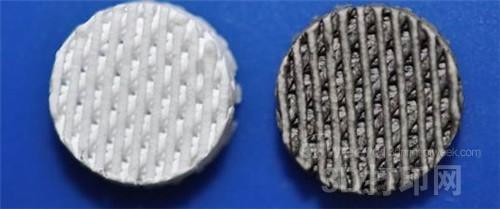
Figure 1. 3D printed pure bioceramic scaffold (left) and bioactive ceramic/graphene oxide composite scaffold (right).
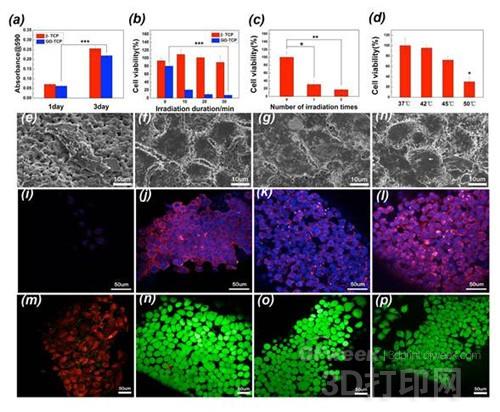
Figure 2. The 3D printed bioceramic/graphene composite scaffold effectively kills tumor cells (b, c, d, e, f, and m) in near-infrared light-induced photothermal effects, if there is no near-infrared light illumination and pure On the bioceramic scaffold, the tumor cells grow well (a, f, g, h, j, k, l, n, o and p).
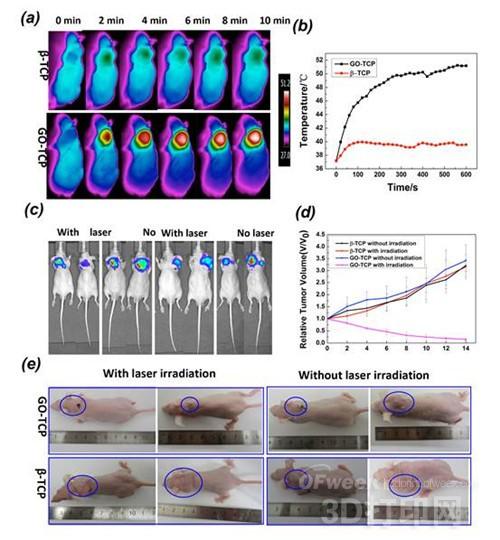
Figure 3. Photothermographic (a) and temperature (b) curves of nude mice in near-infrared light. Tumor in vivo fluorescence imaging (c), tumor volume change curve (d), comparison of photos before and after treatment in nude mice (e).
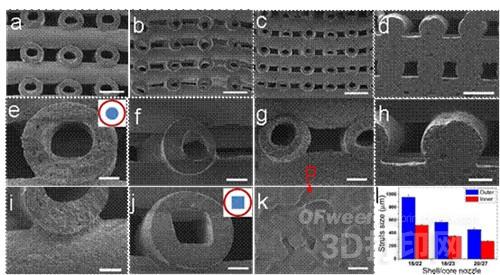
Figure 4. 3D printing has a hollow tubular structure bioceramic scaffold for the repair and regeneration of large bone tissue defects, hollow tubular morphology and scale can be well controlled.
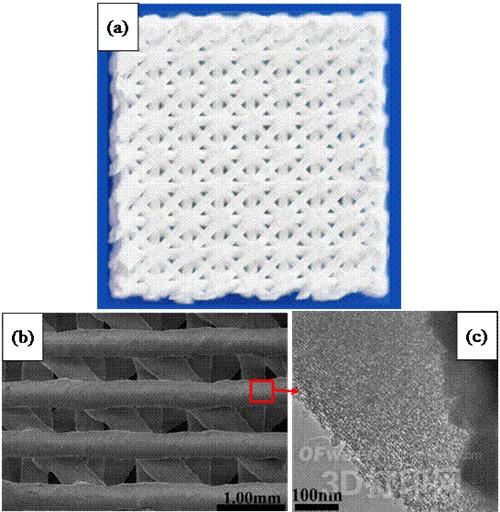
Figure 5. 3D printing of a bioceramic scaffold with a multi-stage pore structure for the macroporous structure (a, b) and the ordered mesoporous structure (c), which has superior osteogenic activity.
23 Series Staples,Heavy Duty Stapler,Smooth Surface 23/13 Heavy Duty Staples,23/13 Heavy Duty Staples For Wood
SHAOXING YIYOU STATIONERY CO.,LTD , https://www.yiyou-staple.com